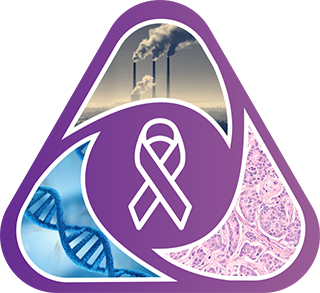
Much of the work carried out by DTT is in support of the National Toxicology Program (NTP), an interagency partnership of the Food and Drug Administration, National Institute for Occupational Safety and Health, and NIEHS.

Public Health Significance
Approximately four out of every 10 people will be diagnosed with cancer at some point in their lifetime. Despite tremendous progress in screening and treatment efforts, cancer is still the second most common cause of death and the leading public health concern in the U.S.
In addition to the obvious detrimental effects of cancer on human health, there are substantial social and economic effects. The cost of cancer care in the U.S. for 2020 was approximately $206 billion, and although the incidence and mortality rates for many cancer types are decreasing, the incidence rates of some cancers are increasing in some demographic groups.
Program Objectives
Developing ways to identify environmental substances that contribute to the development of cancer would help to mitigate existing exposures and prevent such exposures in the future.
The NIEHS Division of Translational Toxicology (DTT) aims to improve public health and reduce cancer risk by establishing a novel translational testing and reporting system. The system will incorporate disease-based knowledge to efficiently identify and characterize environmental cancer hazards and provide actionable, timely information to all stakeholders.
Broad goals of the Carcinogenicity Health Effects Innovation Program include the following:
- Collaboratively develop and/or refine cancer hazard testing and assessment methods and establish a new paradigm to evaluate and characterize environmental exposures that may contribute to human cancers.
- Engage stakeholders on the appropriate interpretation and use of cancer hazard information produced in the new paradigm to establish confidence in the new paradigm.
To develop an integrated framework for characterizing the carcinogenic hazard posed by environmental substances, this program will evaluate and incorporate new in silico, in vitro, and in vivo approaches along with knowledge from existing methods and expertise within DTT, including the 2-year rodent bioassay. Additionally, DTT will develop and assess new technologies and approaches with broad translational relevance for evaluating genetic and epigenetic alterations that may contribute to the initiation and promotion of tumorigenesis.
Background
Existing approaches for cancer hazard assessment rely primarily on data from experimental animal tests that take years to complete, cost millions of dollars, and provide results that might have trans-species differences and limited mechanistic insight. DTT is well-positioned to take on the challenge of establishing a new testing and assessment paradigm because of its extensive experience and expertise in cancer hazard assessment and its goal to lead the transformation of toxicology through innovation.
The Carcinogenicity Health Effects Innovation Program advances the DTT mission to improve public health through research, testing, and analysis activities that are translatable, predictive, and timely, and that help to inform real-life individual and public health outcomes.
DTT will develop fit-for-purpose testing strategies using both existing and new approaches to characterize the potential carcinogenic hazard posed by environmental exposures. We will accomplish our goals by engaging with stakeholders, applying innovative science to generate trusted information, and training the next generation of translational researchers.
Select Studies
| Study | Description | Findings/Supporting Files |
|---|---|---|
| Driver mutation detection via plasma | Plasma liquid biopsy as a novel biomarker tool to identify driver mutations in experimental animal studies. Pilot study to validate genetically engineered mouse lung tumor model. | |
| Sequence changes from ethyl methanesulfonate | In vitro duplex sequencing of TK6 cells treated with ethyl methanesulfonate for 5 days. | |
| Cancer driver mutation screening panel for predicting carcinogenesis | Sequencing of tumors from rats exposed to non-genotoxic carcinogens to identify cancer driver gene mutations. Development of a screening panel of cancer driver genes. Comparison of cancer driver gene mutations in exposed and control non-tumor tissues from subchronic rodent studies. | |
| Genomic alterations in rodent tumors | Identification of mutation signatures and cancer driver genes in rodent tumors exposed to IARC Group 1, 2A and 2B carcinogens. Collaboration with Ramazzini Institute and Wellcome Sanger Institute. | |
| Mutation signatures identification in early-onset and late-onset colorectal cancer | Identification of mutation signatures in human colorectal cancers using the Genotypes and Phenotypes (dbGaP) database. | |
| Colon organoids (colonoids) as an in vitro model system for colorectal cancers | Development of colonoids from human iPSC cells and stem cells and rodent colonocytes. In vitro exposures of colonoids to known colon carcinogens to examine for phenotypic and molecular alterations. | |
| Environmental carcinogenesis studies of colorectal cancer in the PIRC rat | Evaluation of the PICR transgenic rat as a model for environmental colon carcinogenesis. | |
| Polycyclic aromatic hydrocarbons (PAHs) cancer hazard assessment | Systematic review of published human and experimental animal cancer studies, and review of mechanistic information for selected PAHs, not currently listed in the Report on Carcinogens (RoC), to assess carcinogenicity. Use of read across to classify carcinogenic hazard of PAHs with limited animal cancer data. Evaluation of benzo(a)pyrene, which was listed as a reasonably anticipated human carcinogen in RoC in 1980s, based on findings since then. | Patel AP, Mehta SS, White AJ, Niehoff NM, Arroyave WD, Wang A, Lunn RM. 2021. Urinary polycyclic aromatic hydrocarbon metabolites and mortality in the United States: A prospective analysis. PLoS One 16(6):e0252719 |
| Nitro polycyclic aromatic hydrocarbons (NPAHs) cancer hazard assessment | Systematic review of published human and experimental animal cancer studies, and review of mechanistic information for selected NPAHs, not currently listed in RoC, to assess carcinogenicity. Use of read across to help classify carcinogenic hazard of NPAHs with limited animal cancer studies. |


